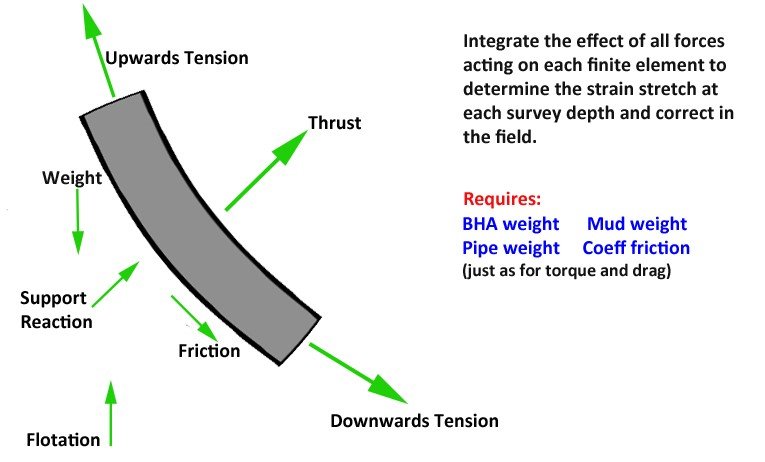It has not been routinely included in survey procedures to estimate and remove the mechanical or thermal expansion of the drillpipe and yet clearly the weight of the BHA itself and the drillpipe suspended below any section of pipe will stretch it, as will any increase in downhole temperature from that observed at surface where the drillpipe length is measured before deployment.

This diagram represents a finite element of drillpipe with all the forces likely to be acting on the element. There is an upward tension on the pipe as it is supported by the pipe above and a downward tension as it carries the drillstring below. These tensions will not be in alignment in curved hole producing a ‘Thrust’ force perpendicular to the wellbore, usually upwards in a build section and downwards in a drop section. There is also the weight of the pipe, countered to some degree by the flotation effect of the drilling fluid, a support reaction and corresponding friction force. If we estimate the coefficients of friction and assume that the survey models the shape of the pipe, we can estimate the mechanical stretch by integrating the axial components of the forces on the pipe and their local strain effects on each element.
E = Youngs Modulus = stress / strain so the strain = stress / Youngs Modulus
This calculation is most useful for high accuracy, absolute TVD measurement. It may seem sensitive to our estimate of the coefficient of friction but in practice this proves to be less than you might anticipate. This is because when the stress most affects TVD, the well is close to vertical and the friction component is small but when friction becomes very significant (i.e. at high angle), the stretch effect in measured depth does not translate to much of an error in TVD.


Post your comment on this topic.